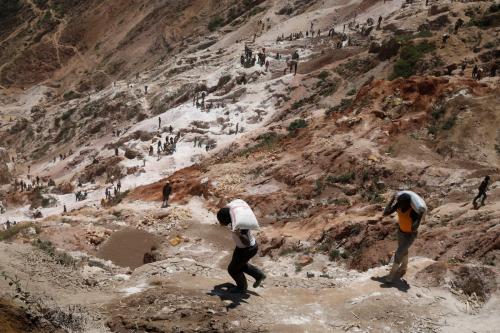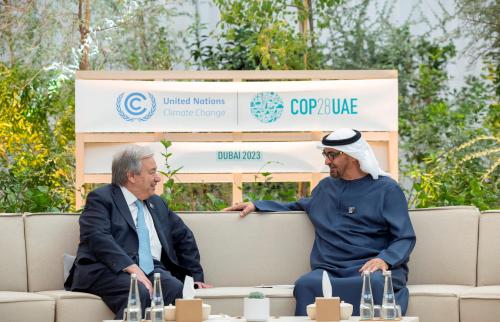For the past three years, we’ve compiled an annual review of natural disasters, highlighting not only overall trends for the year but drawing out lessons to prepare for future disasters. Given the fact that the frequency, intensity and unpredictability of natural disasters is expected to increase as a result of climate change, it is more important than ever that we learn from the past.
In looking back at 2012, we were struck by the ‘recurring disasters’ which occurred in different parts of the world. Hurricane Irene hit the northeastern United States in 2011 and then a little over a year later, Hurricane Sandy hit the same area. Typhoon Washi/Sendong in the Philippines was followed a year later by the deadly Typhoon Bopha/Pablo. And Pakistan experienced its third straight year of widespread flooding. When recurring disasters strike the same communities – communities which haven’t yet recovered from the previous disaster – the results can be devastating. The resilience of affected individuals and communities is undermined. Particularly when the communities are poor and marginalized (who tend to be more affected by disasters in any case), it can be hard to muster the energy and the resources to start over again. The devastation caused by recurring disasters in 2012 highlights the need for increased commitment and investment in disaster risk reduction. But we also know that it’s always easier to mobilize support for responding to a disaster than for taking measures to reduce the risk of future ones.
Statistically, 2012 was an ‘average’ year for disasters without the mega-disasters we saw in 2010 (Haiti) or 2011 (Japan). The deadliest disaster of 2012 was Typhoon Bopha/Pablo in the Philippines; the most expensive disaster was Hurricane Sandy in the US and Caribbean; and the disaster which affected the most people was the drought/food crisis in the Sahel region.
In this year’s review, we also looked at the role of regional organizations in disaster risk management – which is part of a larger research project we’re undertaking. Regional organizations seem to be playing an increasingly important role in the complex world of disaster risk management but have received very little attention. Regional organizations, we found, come in many sizes and shapes and they are involved in different kinds of work with disasters. For example, we found that all regions have developed framework agreements on disaster risk reduction or response. In most regions technical cooperation mechanisms – such as early warning systems – have been established. But few regional bodies provide the means for channeling financial assistance after a disaster.
We also looked at one particular type of disaster – wildfires. As evident in Australia, Russia and the United States, wildfires can destroy large swathes of forest. And yet, wildfires are not very significant in the overall scheme of disasters (with only 156 wildfire disasters reported over the past decade resulting in only 0.07 percent of global disaster fatalities.) But the combination of urban sprawl and a hotter and drier climate because of climate change in many parts of the world make it likely that we’ll see more wildfires in the future.
Finally, we looked at the gender dimensions of natural disasters. Natural disasters and climate change often exacerbate existing inequalities and discriminations, including those that are gender-based and can lead to new forms of discrimination. But women are not just victims; they play significant roles in disaster risk management. They are often at the frontline when disasters occur and they bring valuable resources to risk reduction and recovery efforts. When they are able to participate in the decisions that affect their lives, their families, and their communities, women have much to offer.



Commentary
Recurring Disasters: Are We Learning Lessons?
April 10, 2013